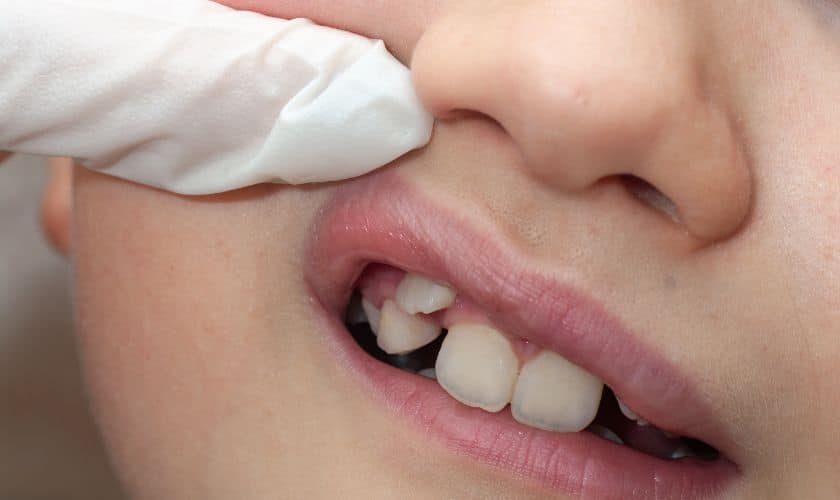
Welcome to our blog post on Understanding Mamelons: What Are They and How to Remove Them? If you’re curious about those bumpy little formations on your child’s newly erupted teeth, fret not! We’ve got all the answers for you. In this informative article, we’ll delve into the world of mamelons – what they are, what causes them, the different types that exist, and whether or not they should be removed.
What Causes Mamelons?
Mamelons are small, rounded bumps that can be found on the cutting edges of a child’s newly erupted permanent incisors. They may appear as three distinct prominences and are characterized by their youthful and uneven appearance. While mamelons usually wear down naturally over time through normal biting and chewing activities, some children may retain them for longer periods.
So what exactly causes these interesting dental features? Mamelons form during tooth development when the enamel of the incisors grows in layers. As each layer forms, it creates a slightly different shape, resulting in the characteristic ridges or bumps seen on mamelons.
Several factors can contribute to the presence of mamelons. One common cause is delayed eruption – when teeth take longer than usual to emerge from beneath the gumline. This delay allows more time for enamel formation and may result in more pronounced mamelons.
Other contributing factors include genetics, variations in tooth size and shape, abnormal jaw growth patterns, or even habits such as thumb-sucking or tongue-thrusting that put pressure on developing teeth.
While typically benign and temporary, retained mamelons can sometimes affect a child’s self-esteem if they persist into adolescence or adulthood. In such cases, parents often seek treatment options to smooth out these irregularities for cosmetic reasons.
Remember that every child is unique and develops at their own pace. If you have concerns about your child’s dental development or if mamelons seem unusually prominent or persistent beyond early childhood stages, consult with a pediatric dentist who will evaluate your child’s specific situation before recommending any further action.
The Different Types of Mamelons
When it comes to mamelons, there are actually different types that can occur on the teeth. These variations in appearance and shape may be due to various factors such as genetics, tooth eruption, or even dental trauma. Let’s take a closer look at some of the different types of mamelons:
1. Classic Mamelons: These are the most common type and appear as small rounded bumps on the incisors (front teeth). They are typically present when permanent teeth first erupt and gradually wear down over time through normal chewing and use.
2. Exaggerated Mamelons: Sometimes, mamelons can be more prominent than usual, causing the front teeth to have a more pronounced appearance with noticeable bumps. This exaggerated form is usually temporary and tends to smooth out naturally over time.
3. Multiple Mamelon Peaks: Occasionally, there may be extra peaks or ridges on the incisor edges instead of just one central bump per tooth. This variation is generally harmless but might require cosmetic treatment if desired.
4. Missing Mamelons: In rare cases, some individuals may not develop any mamelons at all on their front teeth. While this is not typically problematic from a functional standpoint, it can affect the aesthetics of their smile.
Should You Remove Mamelons?
When it comes to the question of whether or not you should remove mamelons, there are a few factors to consider. Mamelons are typically harmless and often disappear on their own as your child’s permanent teeth come in. They are a normal part of dental development and usually no cause for concern.
However, in some cases, mamelons can cause issues such as difficulty eating or speaking properly. If this is the case for your child, it may be worth discussing with their pediatric dentist whether removal is necessary.
Another consideration is aesthetics. Some parents may be concerned about the appearance of mamelons and prefer to have them removed for cosmetic reasons. While there is no medical necessity to do so, it ultimately comes down to personal preference.
If you are considering having mamelons removed, it’s important to consult with a qualified pediatric dentist who can assess your child’s individual situation and provide guidance on the best course of action.
While removing mamelons is not usually necessary from a medical standpoint, there may be instances where intervention is warranted due to functional or aesthetic concerns. It’s always best to seek professional advice from a pediatric dentist who can evaluate your child’s specific needs and provide appropriate recommendations.
Medical Treatments for Mamelons
In the world of pediatric dentistry, understanding and addressing dental issues is key to ensuring a child’s oral health. One such dental concern that often arises are mamelons. These small, rounded bumps on the edges of newly erupted permanent incisors can cause some parents to worry. But fear not! In this article, we have explored what mamelons are, what causes them, and whether or not they should be removed.
Mamelons are completely normal and natural features in children’s teeth. They typically appear as three small bulges on the edge of each newly erupted permanent incisor. This unique structure is formed during tooth development and gradually wears down over time through regular biting and chewing.
The exact cause of mamelons is still unknown. However, it is believed that they occur due to variations in enamel formation during tooth development. As the tooth erupts into the mouth, these excess enamel formations create the distinctive three-bump appearance seen in mamelons.
There are different types of mamelons based on their shape and size. Some may have more pronounced bulges while others may appear smoother or less noticeable altogether. The variation in appearance does not necessarily indicate any underlying dental problems but rather reflects individual differences in enamel formation.
Now comes the question: Should you remove mamelons? Generally speaking, there is no need for intervention or removal unless there are specific concerns related to aesthetics or functional issues caused by overly prominent or sharp-edged mamelon structures.



